In the exhilarating, yet challenging domain of construction work, weather plays a significant and often unpredictable role. One day, the sun shines brightly, painting an encouraging canvas for strenuous outdoor activities. The next day, rain could drape the surroundings in its damp embrace, causing work schedules to shift, safety risks to arise, and productivity to slow down. This natural ebb and flow cannot be controlled, but one thing construction workers can dictate is their preparedness. One practical and effective solution for weathering the rainy days is the reliable, time-tested solution of quality rain gear. This article investigates the transformative potential of high-quality rain gear on worker safety, productivity, compliance with legal and industry standards, and overall construction environment. From choosing between synthetic and natural materials to understanding the role of maintenance and additional safety measures, gear up for a deep dive into the world of rain gear for construction work. Let's begin this journey to redefine safety and efficiency, come rain or shine!
The Importance of Rain Gear in Construction Work
The orchestration of a construction site is much like conducting an orchestra. Every worker has a unique part to play, and when the symphony of activities aligns harmoniously, the results can be a robust structure standing resilient against the forces of nature and time. Surprisingly, one crucial factor in this harmony, often overlooked, is the importance of appropriate rain gear for construction workers. Investing in quality rain gear not only sustains the rhythm of productivity but ensures the well-being of the workforce and fulfills legal and industry standards.
Worker Safety
Firstly, paramount in the hierarchy of construction is undoubtedly worker safety. Rain can transform a construction site into a brewing pot of potential hazards. Slippery surfaces, reduced visibility, and cold-related conditions are common perils associated with working under wet conditions. However, with adequate rain gear, these issues can be mitigated effectively.
- Slip Resistance: Good quality rain gear often boasts slip-resistant properties. For jobs that involve candid outdoor exposure or scaffolding work, these features are vital. They provide the traction workers need to keep their footing secure, reducing the scope for injurious slips and falls.
- Visibility: Heavy rainfall could lead to poor visibility, another major safety concern. Rain gear with reflective or high-visibility features not only aids individual workers in seeing each other but also makes it easier for heavy equipment operators to spot their colleagues in downpours.
- Temperature Control: Lastly, rain gear can keep workers warm and dry in damp conditions, reducing the risk of illnesses like hypothermia and pneumonia. A safe and healthy worker is instrumental to a smoothly operating construction site.
Enhanced Productivity
Another feather in the hat for rain gear is its direct link to enhanced productivity. An adequately protected workforce can continue their tasks despite rain spells which boosts the project's continuity. This resilience in maintaining the workflow even in adverse weather ironically results in a sunny outlook for the project timeline.
Legal and Industry Standards
Rain gear transcends the boundary of being just protective wear; it indeed is a symbol and a requirement of compliance. Construction is a field governed by standards and regulations that prioritize worker safety. Failing to equip workers with appropriate rain gear could result in violations of Occupational Safety and Health Administration (OSHA) regulations, leading to penalties and reputational damage.
It's rightly said that modern problems require modern solutions. As construction work gets more complex and challenging, the industry must evolve its armor to keep its soldiers safe and efficient. Rain gear stands as a testament to this evolution, showcasing the importance of progression in safety and productivity. While construction work is indeed about building great structures, it is equally about caring for the workforce that makes this possible.
Essential Elements of Quality Rain Gear
When selecting the perfect rain gear, one doesn't just invest in an accessory; they're making a commitment to comfort and safety during inclement weather. Superior rain gear is reliable, fits well, and integrates essential elements that help keep moisture at bay. This guide celebrates the pivotal role of waterproof material, durability, comfort, fit, and visibility features in crafting quality rain gear.
Waterproof Material
Arguably, the most critical component of any rain gear is the waterproof material. It is a thin line between a refreshing walk in the rain and an unpleasant drenching. Waterproof materials are specially designed to repel water, essentially acting as a barrier between you and the rain.
In addition to being water-resistant, the preferred waterproof materials are breathable. This feature allows body warmth to escape, reducing moisture build-up inside the garment, and ultimately maintaining comfort levels, even during strenuous activities.
Durability
When it comes to purchasing rain gear, durability matters. Think about it; your rain gear will likely take quite a beating, exposed to harsh weather and potentially abrasive outdoor elements. For this reason, assessing the strength and durability of materials and construction is paramount. Many high-quality rain gear options promise long lifetimes due to reinforced stitching and heavy-duty materials that survive against wear and tear.
Comfort and Fit
Your rain gear should do more than just repel water. It should also offer supreme comfort and fit. Irrespective of the weather conditions outside, you need to feel at ease in your gear. This requires a snug (but not tight) fit that provides plenty of room for movement. Equally important is the incorporation of comfort-enhancing design features, such as adjustable straps, ventilation panels, and lightweight materials.
Visibility Features
Lastly, let's shine a light on visibility features. Rainy conditions often lead to reduced visibility, making it potentially hazardous for outdoor activities, especially during evening hours. Well-made rain gear usually includes reflective accents or bright colors that enhance the wearer's visibility, promoting safety even in the gloomiest scenarios.
Each of these components plays a crucial role in creating a quality piece of rain gear. By understanding what to look for, one can navigate the sometimes overwhelming variety of options to find the rain gear that blends function with comfort and safety. Your perfect rain suit is out there waiting to make your rainy day trips a delightful experience. Let it rain!
Materials Used in Quality Rain Gear
We all understand how uncomfortable it can be to get caught in the rain. That's why it's essential to invest in quality rain gear that keeps us dry and comfortable, regardless of the weather conditions we find ourselves in. But what makes certain rain gear better than others? It all comes down to the materials used in their construction. Let's explore the types of materials commonly used and why they are pivotal in determining the quality of your rain gear.
Synthetic Materials
When it comes to weather resistance, synthetic fabrics rule the rain gear market. They're specially engineered to withstand harsh weather while providing maximum comfort. Here are some synthetic materials typically found in high-quality rain gear:
- Polyester: This lightweight, breathable material is known for its quick-drying properties. Polyester's tight weave makes it highly resistant to water penetration, keeping you dry even in a downpour.
- Gore-Tex: An ingenious blend of materials, Gore-Tex sandwiches a waterproof membrane between layers of fabric. This provides an effective barrier against the elements while allowing perspiration to escape, keeping you dry from both the rain and your own sweat.
- Nylon: Similar to polyester, nylon is another synthetic option prized for its lightweight, quick-drying attributes. It’s also highly durable, making it a mainstay in outdoor and activewear products.
Natural Materials
While synthetic materials reign supreme in terms of waterproofing, natural fabrics are cherished for their breathability and comfort. Some natural materials found in rain gear include:
- Cotton: Soft and breathable, cotton can be treated to provide water-resistance, creating a comfortable yet functionality fabric.
- Wool: Beloved for its natural water-resistance and warmth, wool is perfect for cold, damp climates. In fact, certain types of wool rain gear can stay warm even when wet, a much-needed attribute in cold, wet weather.
Material Durability and Waterproofing
Of course, durability and waterproofing are two critical considerations. No one wants rain gear that falls apart after a few uses, or worse, fails to keep us dry in a deluge. Rain gear encounters harsh weather frequently, so investing in durable, well-constructed gear is a smart move.
Be sure to look for gear with a high Denier rating, a measurement denoting the thickness of individual fibers within the fabric. A high Denier rating often correlates with higher durability and better waterproofing.
Remember though, even the most waterproof material won't provide much protection if the design isn't up to par. Choose rain gear with strong, sturdy seams and closures; these features are often where leaks first appear.
Whether you're taking a rainy hike or just commuting to work on a wet day, having quality rain gear is crucial. So next time you find yourself shopping for rain gear, you'll know exactly what to look for in terms of materials. After all, it's the materials that have the most significant impact on your comfort and dryness during those rainy days.
Choosing the Right Rain Gear for Various Construction Scenarios
When it comes to working in the construction industry, the importance of being prepared with the right gear - specifically rain gear - cannot be overstated. Having the right rain gear not only ensures safety but also enhances productivity on a rainy or stormy day. The reality is, not all rain gear suits every construction scenario. A divergent approach is required for heavy rain conditions versus lighter rain situations or working in low-light conditions. This article will guide you on choosing the right rain gear for varying construction scenarios, ensuring you stay dry, safe, and efficient.
Heavy Rain Scenarios
Heavy rain conditions demand gear that can resist water ingress while offering optimum breathability to prevent internal condensation. Ideally, you would want to look for:
-
Waterproof Material: Opt for a product that offers seamless waterproof coverings, like PVC or a high-density polyester coated with waterproofing agents.<
Proper Maintenance and Care for Rain Gear
Whether you're an outdoor enthusiast or a city commuter, your trusty rain gear ensures you stay dry during those relentless downpours. However, few acknowledge the importance of maintaining and caring for their rain gear. Just like any other item that serves a protective purpose, rain gear, too, requires consistent TLC to perform at its best and keep you protected from erratic weather patterns. Let's dive into a few ways to efficiently maintain your rain gear.
Cleaning
Rain gear isn't like your average clothing. Washing them regularly in a machine with standard detergents can damage the waterproofing and overall quality. Opt for gentle, specialized detergents designed specifically for high-tech outdoor gear. Here's a simple cleaning regimen for your rain gear:
- First, shake off any loose dirt or debris.
- Hand wash or use a delicate machine cycle with cold water.
- Always use a gentle, gear-specific detergent.
- Avoid fabric softeners, dry cleaning, or bleach at all costs.
- Rinse thoroughly to ensure no soap residue remains.
Remember, proper cleaning is a cornerstone of effective rain gear care and can extend its lifespan significantly.
Storage
Correct storage of your rain gear is equally as important as cleaning. Improper storage can lead to creases, crinkles, and potentially compromise its waterproof capabilities. Do away with simply stuffing your rain gear in a hike bag or a closet with the general principle of 'Out of Sight, Out of Mind'.
- Let the gear dry naturally before storing - never store it damp or wet.
- Keep in a cool, dry place, out of direct sunlight.
- Avoid tightly folding. Instead, loosely roll up your rain gear or hang it up to avoid creasing.
- Don't store them amidst sharp objects that might leave tears or punctures.
Heed these tips for optimal storage and make the most out of your investment in your rain gear.
Gear Inspection and Replacement
The reality is that even the best care and maintenance cannot make your rain gear last forever. Regular gear inspection is crucial to assess its condition and figure out when replacement is necessary.
- Look out for physical damage like rips, tears, and holes.
- Check for peeling or worn out waterproof coatings.
- Note if you're getting wet or cold - this might be due to the gear losing its waterproof or insulation capabilities.
Your safety and comfort are of utmost importance, so don't hesitate to replace your rain gear when it's time.
By paying adequate attention to cleaning, storage, and regular inspection, you'll be maximizing the longevity of your rain gear. Don't let bad maintenance make you dread those rainy days. Instead, embrace them with confidence and your well-preserved gear. After all, when taken care of, your rain gear will take care of you. Remember, proper maintenance isn't just about extending your gear's lifespan, it's about enhancing your comfort and safety in the face of turbulent weather.
Beyond Gear: Additional Safety Measures for Rainy Construction Work
Rainy weather can bring several challenges to construction work. Beyond the usual gears such as waterproof clothing and slip-resistant boots, additional safety measures are imperative to protect workers and ensure project continuity. These measures, which include workers' training, emergency preparedness, and site assessment and weather monitoring, demonstrate a comprehensive approach to rainy construction work safety.
Workers' Training
In the advent of uncontrollable weather conditions like rain, the importance of well-informed and well-trained construction workers can't be overemphasized. Every worker needs adequate knowledge on:
- The proper use of rain-specific gear. This not only includes wearing the gear appropriately but also maintaining it effectively.
- Recognizing imminent weather changes. Being able to identify a brewing storm or imminent heavy rain allows for suitable preparation.
- Knowing the safety protocols for working in the rain. Workers should understand the precautions to take when handling tools and operating machinery in the rain. They should also know when to stop work due to excessive rainfall.
Such training could significantly reduce accidents on construction sites during rainy weather.
Emergency Preparedness
In addition to workers' training, an emergency response plan tailored to rainy weather conditions is another key safety measure. This plan should ideally include:
- Measures to address potential flooding and waterlogging
- Guidelines for the use and storage of electrical equipment to prevent electrocution
- Protocols for evacuation in case of severe weather
Preparing for emergencies ensures that workers know how to respond effectively when the need arises, mitigating the risks associated with work interruptions or worse still, casualties.
Site Assessment and Weather Monitoring
Lastly, conducting regular site assessments and monitoring the weather can make all the difference in mitigating weather-related risks.
Site assessments identify areas susceptible to waterlogging and flooding, the stability of structures in rainy conditions, and how rain could affect ongoing construction work. Having this knowledge helps in strategic planning and in making on-time decisions to prevent accidents and disruptions.
Weather monitoring, on the other hand, is an indispensable tool for detecting weather changes in advance. Reliable weather updates inform decisions such as postponing work or putting emergency plans to action, thereby ensuring the safety of workers and the integrity of the construction project.
By focusing beyond gear, these measures add a comprehensive line of defense against the risks inherent in rainy construction work. They not only protect the workers but also serve to maintain the integrity and timeline of the construction project.
Conclusion
Stepping out into the unpredictable weather of a construction site entails risks, and having reliable rain gear could significantly decrease that uncertainty. By selecting appropriate rain gear, which comprises waterproofness, durability, comfort, and visibility features, workers can safeguard their health and increase their productivity. Remember, material selection plays a pivotal role, which could be a blend of synthetic and natural materials based on the degree of exposure. Cleaning, storage, and inspection reinforce the gear's longevity, but additional safety measures, such as workers' training, emergency preparedness, and site assessment, can augment the security layer.
While safety is a shared responsibility, let's not forget about the quality assurance aspect. With so many products available in the market, Hurricane Raingear stands out with its meticulous design philosophy that places the worker's safety and comfort at the core. Handcrafted in the Pacific North West, the rain gear promises 100% waterproofness, rip-resistance, and unrestricted movement. Moreover, it features reflective 3M striping for enhanced visibility, a must in any construction scenario. Ultimately, the right rain gear acts as your shield in the battle against harsh weather conditions, ensuring your safety and peace of mind. Because when it comes to construction work, being prepared for weather conditions is not an option - it's a requirement.
Frequently Asked Questions
-
Why is quality rain gear important for construction work?
Quality rain gear is important for construction work because it provides protection against wet weather conditions, keeping workers dry and comfortable. It helps prevent illness, potential accidents, and ensures productivity on the job site.
-
What are the essential features to look for in rain gear for construction work?
Essential features to look for in rain gear for construction work include waterproof and breathable materials, durable construction, adjustable cuffs and hems, reflective accents for visibility, multiple pockets for storage, and a comfortable fit.
-
Can I use regular rain gear for construction work?
While regular rain gear may provide basic protection, it may not be designed to withstand the demands of construction work. Construction-specific rain gear is usually made with heavy-duty materials and additional features to ensure durability and functionality in a construction environment.
-
How do I choose the right size of rain gear for construction work?
To choose the right size of rain gear for construction work, refer to the manufacturer's sizing guide and take accurate measurements of your chest, waist, and inseam. It's important to choose a size that allows for comfortable movement and layering of clothing underneath.
-
Is it worth investing in quality rain gear for construction work?
Yes, it is worth investing in quality rain gear for construction work. While it may require a higher upfront cost, quality rain gear will provide superior protection, durability, and comfort, ensuring long-term use and minimizing the need for frequent replacements.



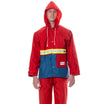
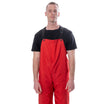
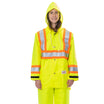
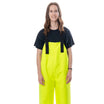
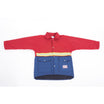
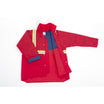

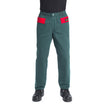
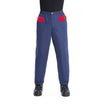
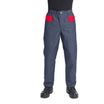
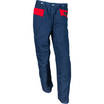
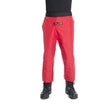
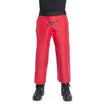
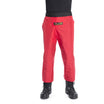
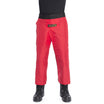

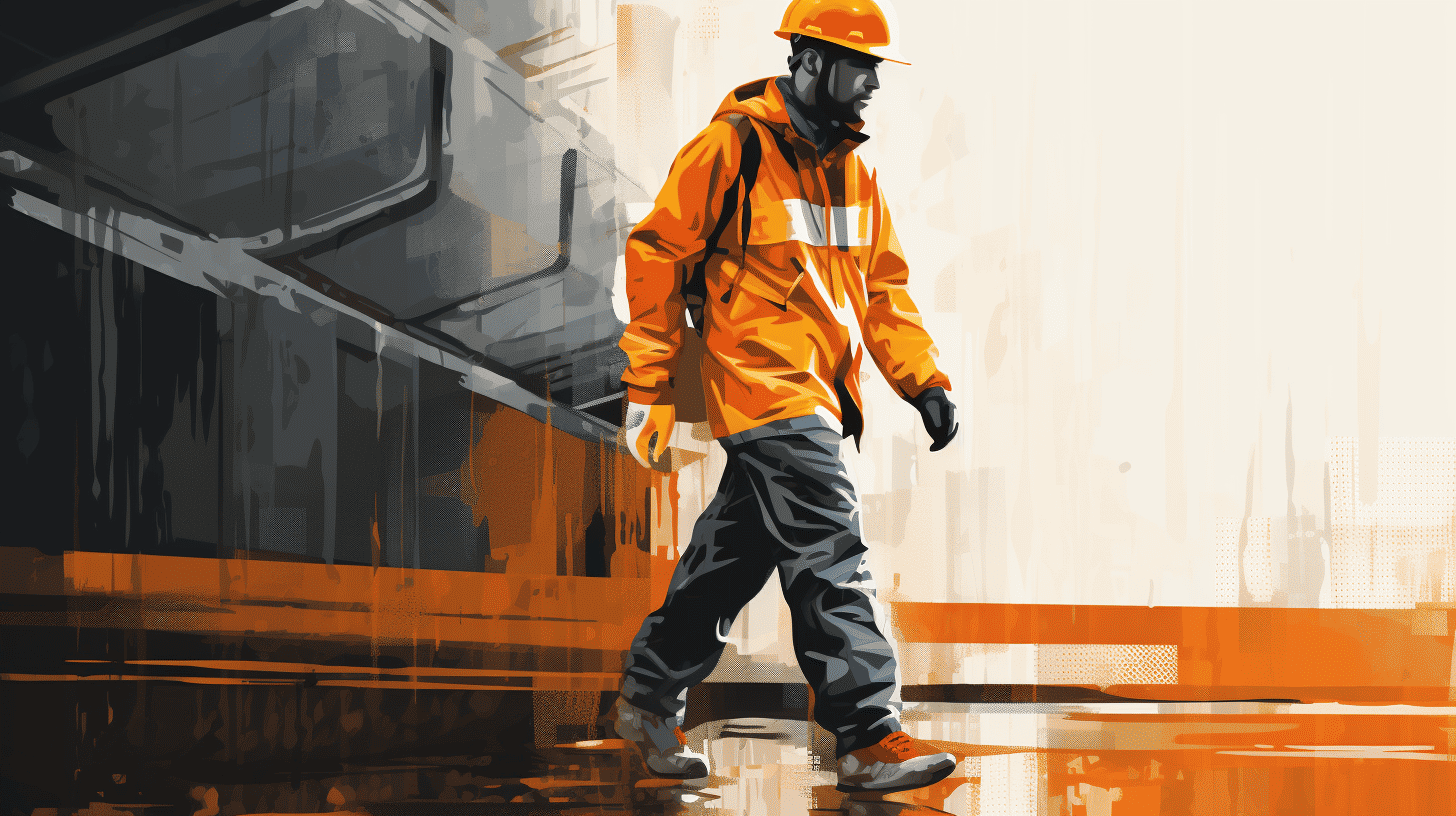
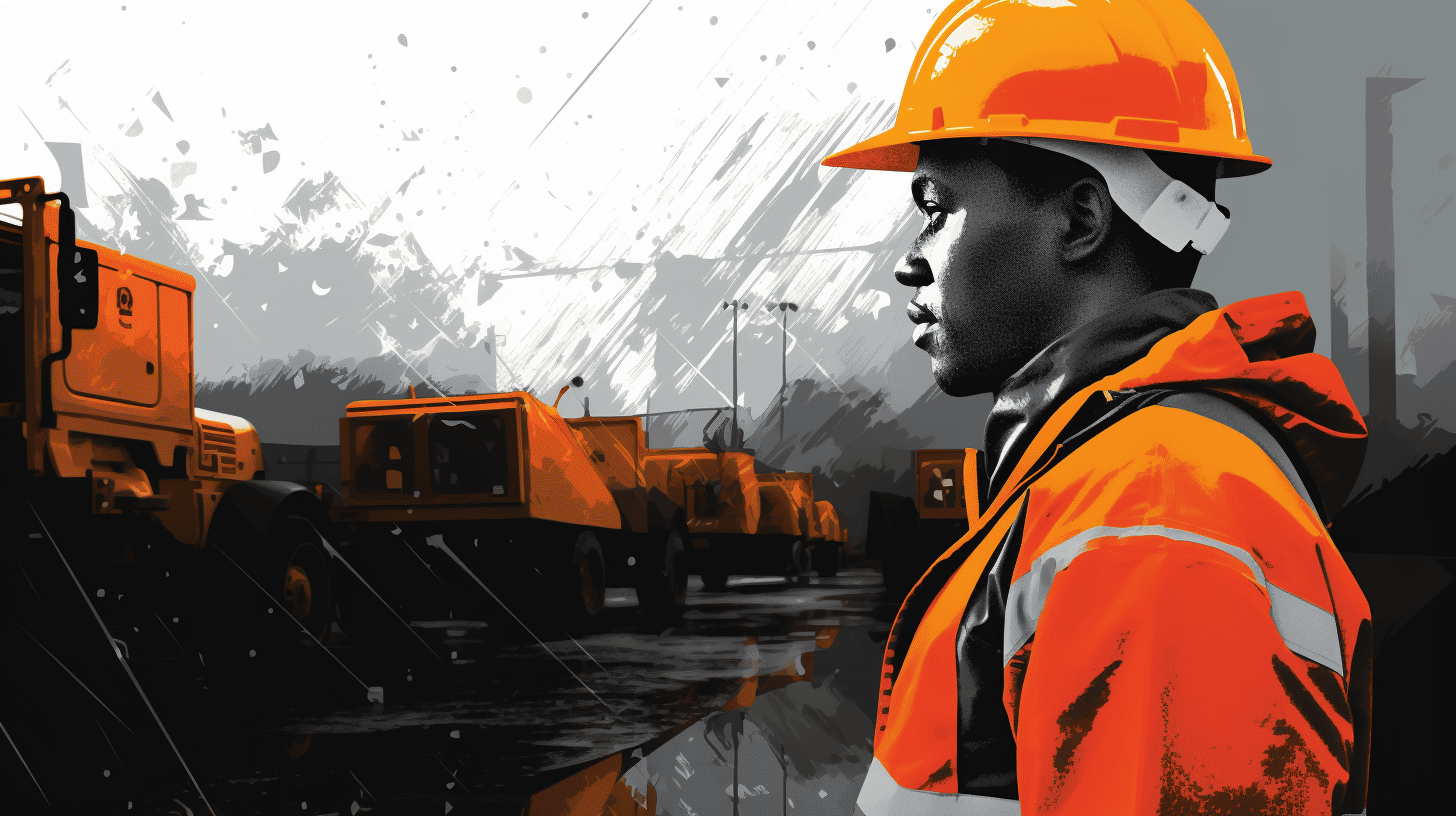
Leave a comment
This site is protected by hCaptcha and the hCaptcha Privacy Policy and Terms of Service apply.